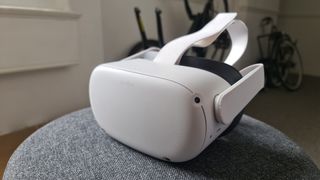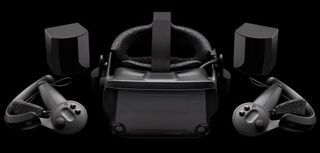The Quest 2's 120Hz refresh rate to be enabled by default
Hopefully that means greater interest for the speedy refresh across games and apps.

The Quest 2's 120Hz refresh rate has been an experimental feature for over a year now, meaning you had to dive into the settings to enable it at your own risk. Once enabled, it has allowed some apps to take advantage of the VR headset's secretly speedy refresh rate. However, with various hoops to jump through for users to utilise the faster refresh rate, not all have done so.
That might change with the imminent introduction of the 120Hz refresh rate as default for the VR headset. Consulting CTO of Meta's VR team and founder of Id Software, John Carmack, has confirmed that the 120Hz experimental feature will soon be made "default-on."
120 fps has been an "experimental feature" on Quest 2 for a long time, and we are finally going to make it default-on. Any app that plays 60 fps video should consider 120 fps display -- it avoids the flicker of 60 fps display, and makes imperfect release tempo less harsh.September 5, 2022
Once enabled by default, apps that support 120Hz display won't have to worry about telling users how to switch it on, and here's hoping the headset's rapid refresh rate will be taken advantage of a whole lot more often for games, apps, and video.
The higher refresh rate will require some extra horsepower, however, so I expect some games may struggle to make the switch while running on the Quest 2's integrated processor.
When asked about the refresh rate's impact on battery life, Carmack said "It only gets used when apps explicitly ask for it, and only a modest handful take advantage of it -- most apps can't run at those high rates."
This isn't the first time owners of the Quest 2 have enjoyed a bump to its refresh rate. The Quest 2 launched with a steady 72Hz refresh rate advertised, with the promise of an experimental 90Hz mode. The 90Hz mode was rolled out across the board late in 2020, and in my experience most apps support the higher refresh rate relatively well.

Best VR headset: which kit should you choose?
Best graphics card: you need serious GPU power for VR
Best gaming laptop: don't get tied to your desktop in VR
With this pending update, which doesn't have a firm date as of yet, 120Hz refresh rates will become the new norm. Thus bringing the Quest 2 up to speed with the Valve Index. In the Index's defence, however, it does offer an experimental 144Hz mode.
The biggest gaming news, reviews and hardware deals
Keep up to date with the most important stories and the best deals, as picked by the PC Gamer team.
If you haven't purchased a Quest 2 as of yet, unfortunately you have missed the boat for buying one at its original price of $299/$399. Meta increased the price for the headset by $100 earlier this year, and that change in price has largely been reflected in what retailers are now charging for it.
It's still a decent price for a headset that keeps getting better with age (you no longer need a Facebook account to use the Quest 2, either), but it's a shame to see some of its shine lost with a price increase.

Jacob earned his first byline writing for his own tech blog. From there, he graduated to professionally breaking things as hardware writer at PCGamesN, and would go on to run the team as hardware editor. He joined PC Gamer's top staff as senior hardware editor before becoming managing editor of the hardware team, and you'll now find him reporting on the latest developments in the technology and gaming industries and testing the newest PC components.
Most Popular






